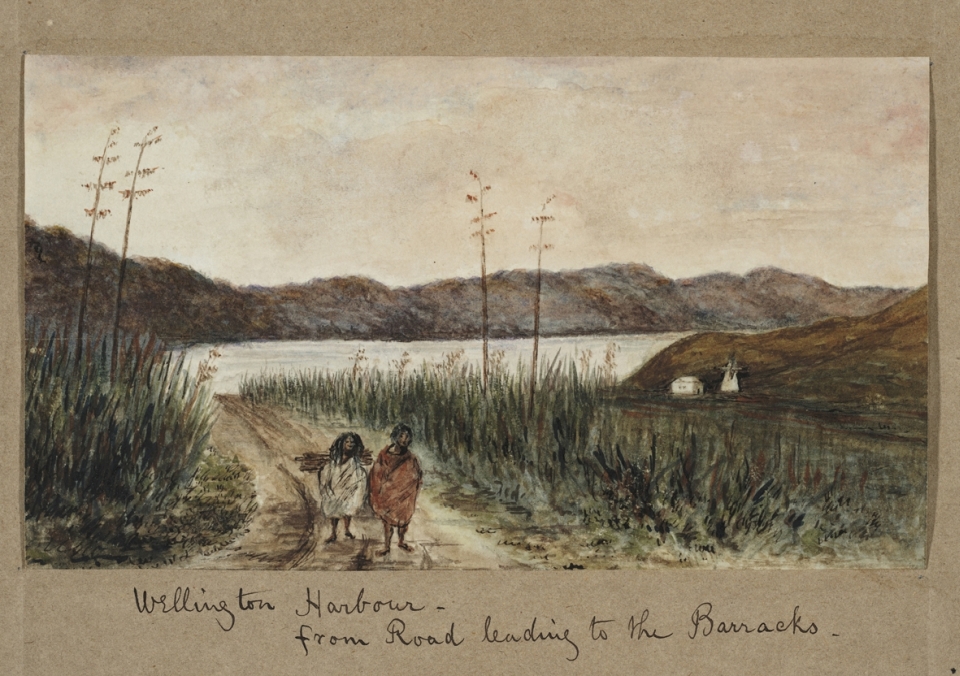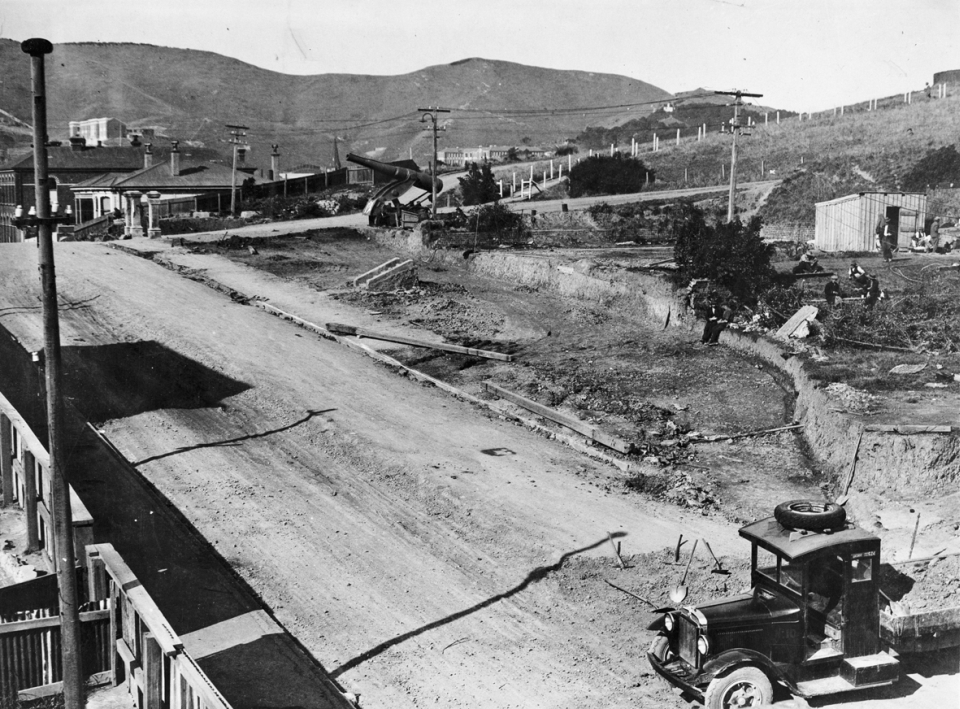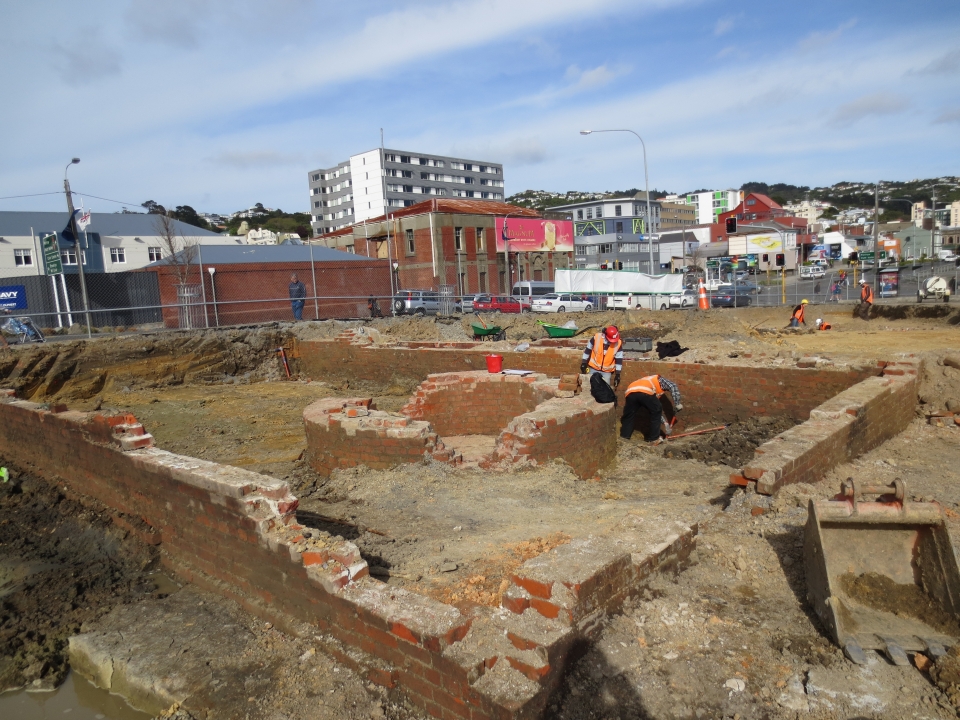You can contact LEARNZ, part of CORE Education, at:
Postal Address:
PO Box 13 678,
Christchurch 8141,
New Zealand
Mount Cook/Pukeahu and Buckle Street have always played an important part in the history of New Zealand / Aotearoa.
Māori lived in this area long before European settlers arrived. The hill was a special place for Māori living around Te Whanganui a Tara/Wellington Harbour.
This area is known as Pukeahu – meaning a sacred hill. An ahu is a sacred mound used for ceremonies. It was used as a pā (fortified village) by Te Ati Awa – the tribe from Taranaki who settled in Te Whanganui a Tara. The slopes leading down to the harbour were gardens from the earliest times.
When European settlers arrived in 1840, they saw that Mount Cook/Pukeahu was a good place for defence so they built their army, police barracks and prisons along Buckle Street. Prisoners made bricks from Mount Cook/Pukeahu clay soil which they marked with the shape of an arrow and used to make buildings and walls on the hill. The European settlers called Pukeahu Mount Cook after Captain James Cook.
When the Government decided to build the National War Memorial after the First World War, Mount Cook/Pukeahu was chosen as the best spot because it had been a place for defence and because a tall memorial tower built here would be seen from all around.
The Carillon tower was the first of the three parts of the National War Memorial to be built. A carillon is a musical instrument usually placed inside a bell tower.
The Memorial Park Carillon has 74 huge bells which weigh a total of 70.5 tonnes. It is the third-largest Carillon in the world and is 51 metres in height.
The Carillon opened more than 80 years ago in 1932. Back then it could be seen from any part of the city and by ships entering the harbour. Skyscrapers now block that view from people in the inner city of Wellington.
Mount Cook/Pukeahu is also an important place for education. Mount Cook School was built in 1875. Wellington High School and Massey University College of Creative Arts have also been placed here.
Many Wellington streets are named after directors of the New Zealand Company which was formed in 1823. John William Buckle was one of those directors.
Over the years Buckle Street has turned from a track into a wide road that is now part of State Highway One. State Highway 1 (SH 1) is the longest and most significant road in the New Zealand roading network, running the length of both our main islands. It is also part of the main route through Wellington for people travelling to and from the airport.
Every year Buckle Street has to be closed for memorial services at the National War Memorial. Once the new road is built through the tunnel underneath the park, it will be called the Memorial Park Underpass and will not need to be closed during services.

,An 1852 watercolour by John Pearse showing two small Māori figures heading up towards the Buckle Street army barracks. Image: Alexander Turnball Library.

,Roadworks on the old Buckle Street in 1930. Can you see the cannon at the barracks gates? Image: Alexander Turnbull Library. Photo Evening Post Newspaper.

Archaeologists carefully excavated this gun pit at the Taranaki end of Buckle Street before the diversion road was built.
Find out more about how Anzac Day is commemorated in your local community.